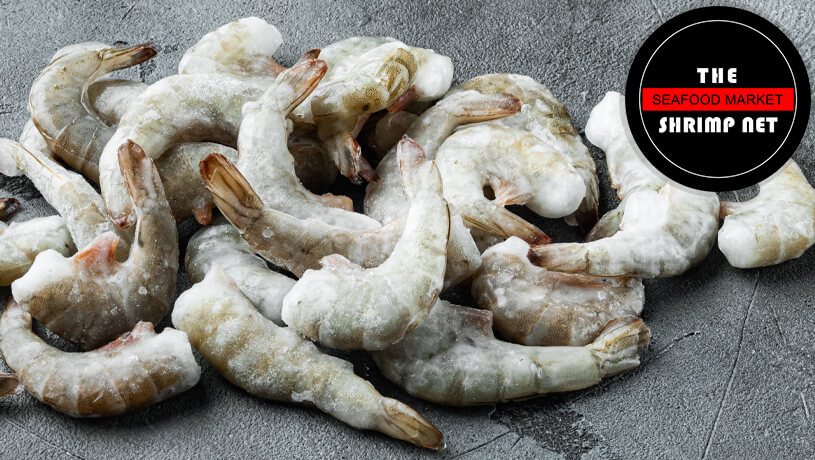Hey there! I’ve been freezing shrimp for years, and one question I get asked a lot is whether it’s okay to freeze shrimp with the heads still attached. The short answer is yes – you absolutely can freeze shrimp with heads on! But there’s a bit more to it than that. Let me break down everything you need to know about keeping those heads on when freezing your shrimp.
The Great Head-On Debate: Pros and Cons
Before we dive into the how-to, let’s look at what you’re getting into when keeping those heads attached:
Advantages of Freezing with Heads On:
- Better flavor retention (that head contains tasty “shrimp butter”!)
- Keeps the meat juicier
- Great for making stocks and sauces later
- Saves prep time upfront
- Better texture preservation
Disadvantages to Consider:
- Takes up more freezer space
- Slightly higher risk of spoilage
- Some folks find the look unappetizing
- May not last quite as long in freezer
How to Freeze Head-On Shrimp Like a Pro
Here’s my tried-and-true method for freezing shrimp with heads on
Step 1: Start with Fresh Shrimp
- Buy the freshest shrimp possible
- Look for firm, translucent flesh
- Avoid any that smell fishy or like ammonia
- Make sure they’re properly chilled
Step 2: Clean and Prep
- Rinse thoroughly under cold water
- Remove any visible dirt/debris
- Devein if desired (I usually do this after thawing)
- Sort by size for even cooking later
Step 3: Choose Your Freezing Method
I’ve tried several methods, and these work best
Method 1 Water Glazing (My favorite!)
- Lay shrimp in single layer on parchment-lined baking sheet
- Freeze until solid
- Transfer to container
- Cover completely with cold water
- Freeze again
Method 2: Vacuum Sealing
- Perfect if you’ve got a vacuum sealer
- Removes all air (major plus!)
- Great for longer storage
Method 3: Container Method
- Use rigid freezer containers
- Submerge completely in light brine or fresh water
- Leave tiny bit of headspace
- Shell won’t pierce container
Storage Tips and Timeframes
How Long Will They Last?
From my experience:
- Raw head-on shrimp: 6-8 months optimal
- Can go up to 12 months but quality may decline
- Best used within first 6 months
Signs Your Frozen Shrimp Has Gone Bad
- Strong, funky odor
- Mushy texture
- Discoloration
- Freezer burn spots
- Milky appearance
Thawing Your Head-On Shrimp
Never thaw at room temp! Here’s what I do instead:
Best Method: Refrigerator Thawing
- Place in bowl in fridge overnight
- Takes 12-24 hours depending on amount
- Safest method
Quick Method: Cold Water Thaw
- Keep shrimp in sealed bag
- Submerge in cold water
- Change water every 30 mins
- Takes about 1 hour
Cooking Tips for Previously Frozen Shrimp
I’ve learned these tricks work best:
- Cook straight from frozen for some recipes
- Use higher heat, shorter cooking times
- Don’t overcook – they’ll get rubbery
- Great for soups, stir-fries, and grilling
- Add oil or marinade to prevent drying
FAQs I Often Get Asked
Q: Does freezing kill bacteria?
A: Nope! It just slows bacterial growth. Proper cooking is still essential.
Q: Can I refreeze thawed shrimp?
A: I wouldn’t recommend it – affects quality and safety.
Q: Should I salt the water when freezing?
A: A very light brine is optional but not necessary.
Final Thoughts
While some chefs prefer removing heads before freezing, I’ve had great success keeping them on. The key is proper preparation and storage. Just remember – the fresher your shrimp are when they go into the freezer, the better they’ll taste when they come out!
Remember, these methods work whether you’re freezing a small batch for family dinner or stocking up after a successful shrimping trip. Just follow these guidelines, and you’ll have delicious shrimp ready whenever you need them!
Would you like me to explain anything in more detail? Drop a comment below – I love helping fellow seafood enthusiasts get the most out of their catch!

Is it safe to freeze fruits without sugar?
Yes; sugar is not used as a preservative but only to maintain flavor, color and texture.
Is it necessary to thaw meat or fish before cooking?
No, meat and fish can be cooked from the frozen state if extra cooking time is allowed. The amount of time will depend on the size and shape of the cut. Large frozen roasts can take as much as 11/2 times as long to cook as unfrozen cuts of the same weight and shape. Small roasts and thin cuts such as steaks and chops require less time.
